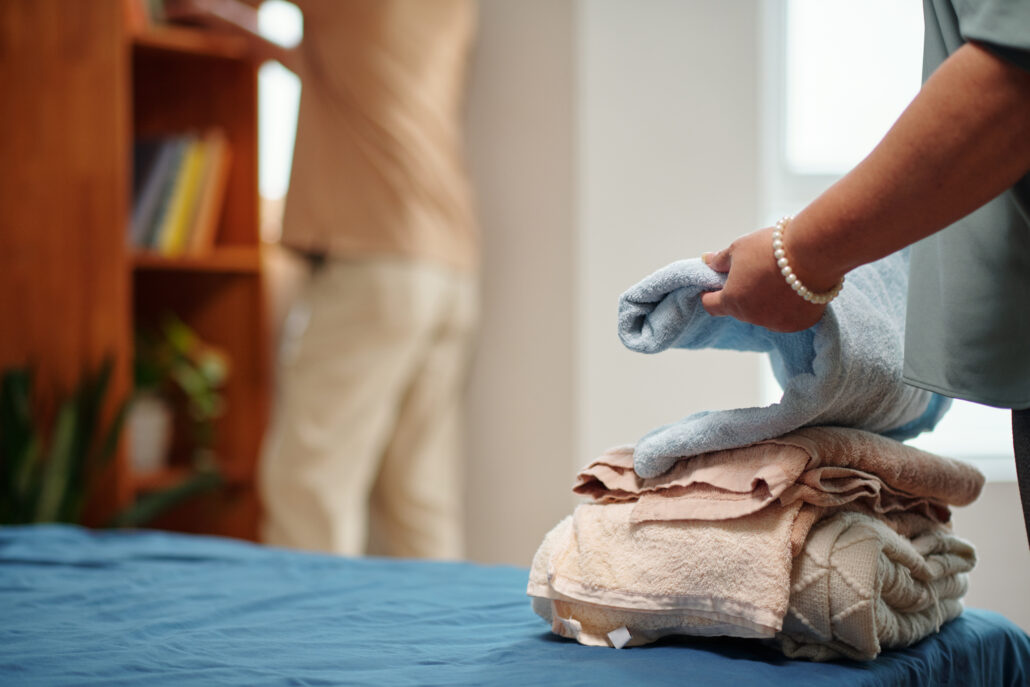When it comes to getting a good night’s sleep, what you wear to bed isn’t often the first thing people think of, but sleepwear can make a big impact on the quality of your sleep. Whether you prefer silk pajamas, a cotton t-shirt and shorts, or sleeping in the nude, choosing the right sleep attire can be the key to a restful night’s sleep.
Discover how your choice of sleepwear stacks up against other Americans, as well as the benefits of different sleep attire for promoting a more restful night’s sleep.
What Do You Wear To Bed?
There are several reasons why wearing the right sleepwear to bed can promote quality sleep. First, sleeping clothes can help regulate your body temperature by trapping body heat (this can vary based on the materials). This can be especially beneficial during the colder months, as staying warm can help you fall asleep faster and stay asleep longer. Second, wearing comfortable clothes to bed can help you relax and feel more at ease. Additionally, creating a routine around changing into your sleepwear can also help signal to your brain that it’s time for bed, establishing a healthy sleep habit that helps you to fall asleep easier.
On the other hand, wearing the wrong clothes to bed could hinder quality sleep. Some may be too tight or too loose, while others are too warm or too cool. You don’t want what you wear to bed to be the reason you wake up in the middle of the night sweating or shivering, causing you to miss out on much-needed sleep.
Wondering how your sleepwear habits stack up against other Americans? According to a Better Sleep Council survey:
- Three-quarters of adults (74%) sleep in pajamas at least a few times a week or more.
- Two in 10 adults (21%) sleep in the nude at least a few times a week or more.
- One-third of adults (32%) sleep in socks at least a few times a week or more.
Whether you fall in with the majority or you’re a sleepwear outlier, it’s important you choose sleepwear that’s right for you and your sleep preferences. By finding the right sleepwear, you’ll be on your way to a more restful night’s sleep.
Sleepwear: the Best Clothes for Sleeping
There are many different sleepwear options available, and choosing the right one can make a big difference in the quality of your sleep.
Different lengths, materials and styles can all affect how you sleep. Whether you have a personal preference for long or short, loose or form fitting, changing into designated sleep clothes will help signal your brain that it’s time to sleep. Just make sure it’s not your yoga pants, running gear, or workout clothes. It’s important to wear pajamas dedicated to bedtime because they can help you get in the mindset of going to bed and falling asleep—plus pajamas are often more comfortable, too!
Ultimately, your ideal sleepwear depends on various factors, including room temperature, your blanket preferences, if you like to cuddle with your partner, and more. What’s right for you might not be right for everyone else—including if you choose to not wear any sleep clothes at all!
Sleeping Naked
If you prefer to sleep in the buff, you’re in luck! Sleeping naked has several benefits.
First, it can help regulate your body temperature, as there’s nothing to trap your body heat. Sleeping cooler at night also means that you can fall asleep faster, get better quality sleep, and boost your metabolism.
Second, sleeping naked can help reduce your risk of bacterial and fungal infections. Fungus thrives in warm, moist environments, so eliminating any tight fitting sleeping clothes and letting your skin breathe with loose, breathable sleepwear can help air circulate and prevent common fungus, like yeast, from growing.
Third, it may help you feel more connected and improve intimacy with your partner. Skin-to-skin contact increases oxytocin, the feel-good hormone that reduces anxiety and promotes feelings of connection.
Sleeping with Socks On
Do you always feel like your feet are icicles that take forever to warm up at night? Try wearing socks to bed! Wearing loose, comfortable, and lightweight socks can keep your feet warm and can be easily removed if you get too hot during the night.
There are other benefits to wearing socks to bed too. Not only does wearing socks to bed help increase blood circulation, which can help regulate body temperature, but warming your feet at bedtime can actually help you fall asleep faster. Just make sure that your socks aren’t too tight. Sleeping with compression socks on can cut off blood circulation or cause you to overheat at night, both of which are uncomfortable and can be disruptive to sleep.
Conclusion
Whether you sleep in oversized flannel pajamas or in the nude, what you choose to wear to bed can have a big impact on the quality of your sleep. Ultimately, it’s important to listen to your body and choose sleeping clothes that are comfortable, breathable, and perfect for catching some Zzzs. Dress for sleep success with the right sleepwear and get the restful, rejuvenating sleep you need to wake up feeling refreshed and ready to tackle the day.



